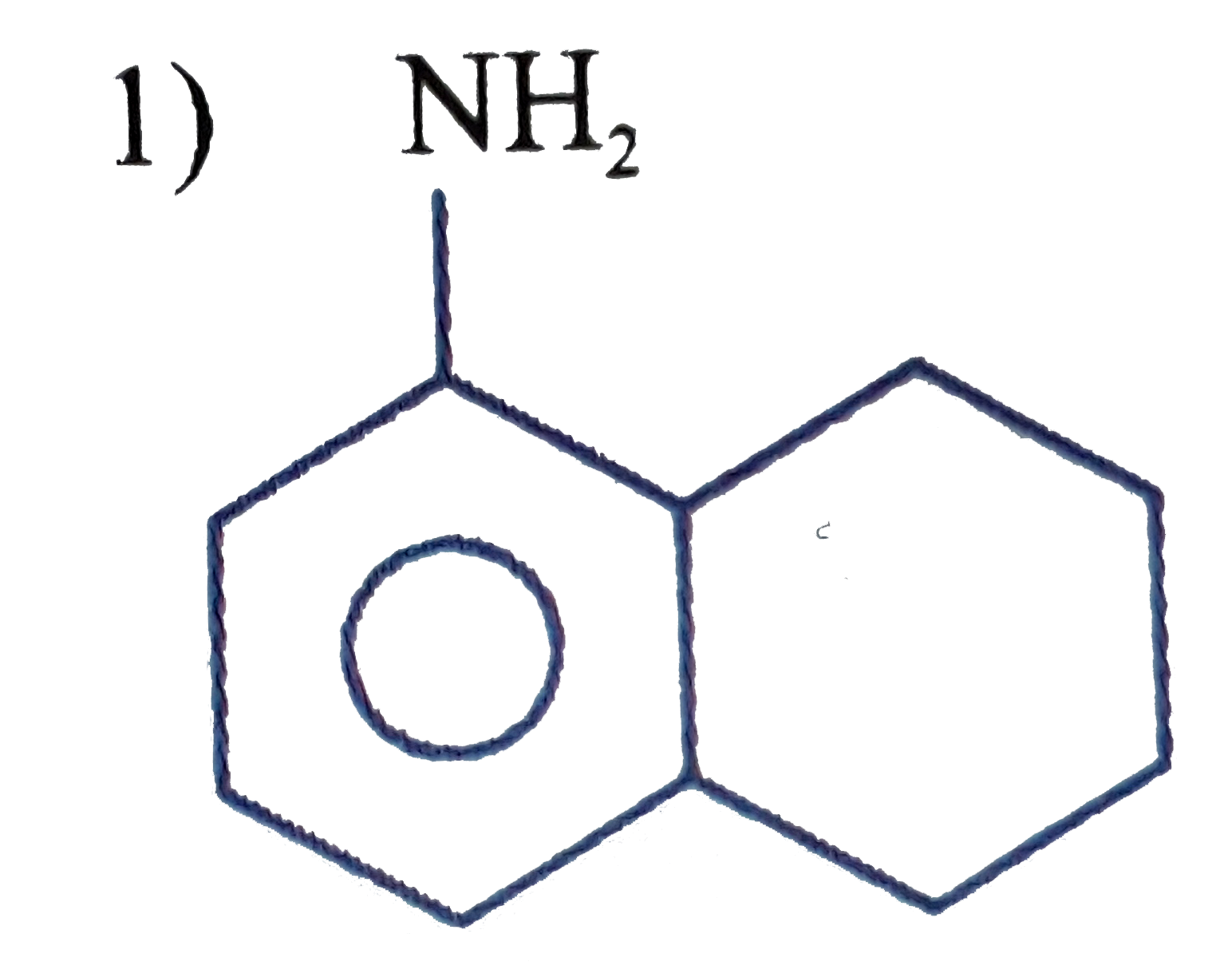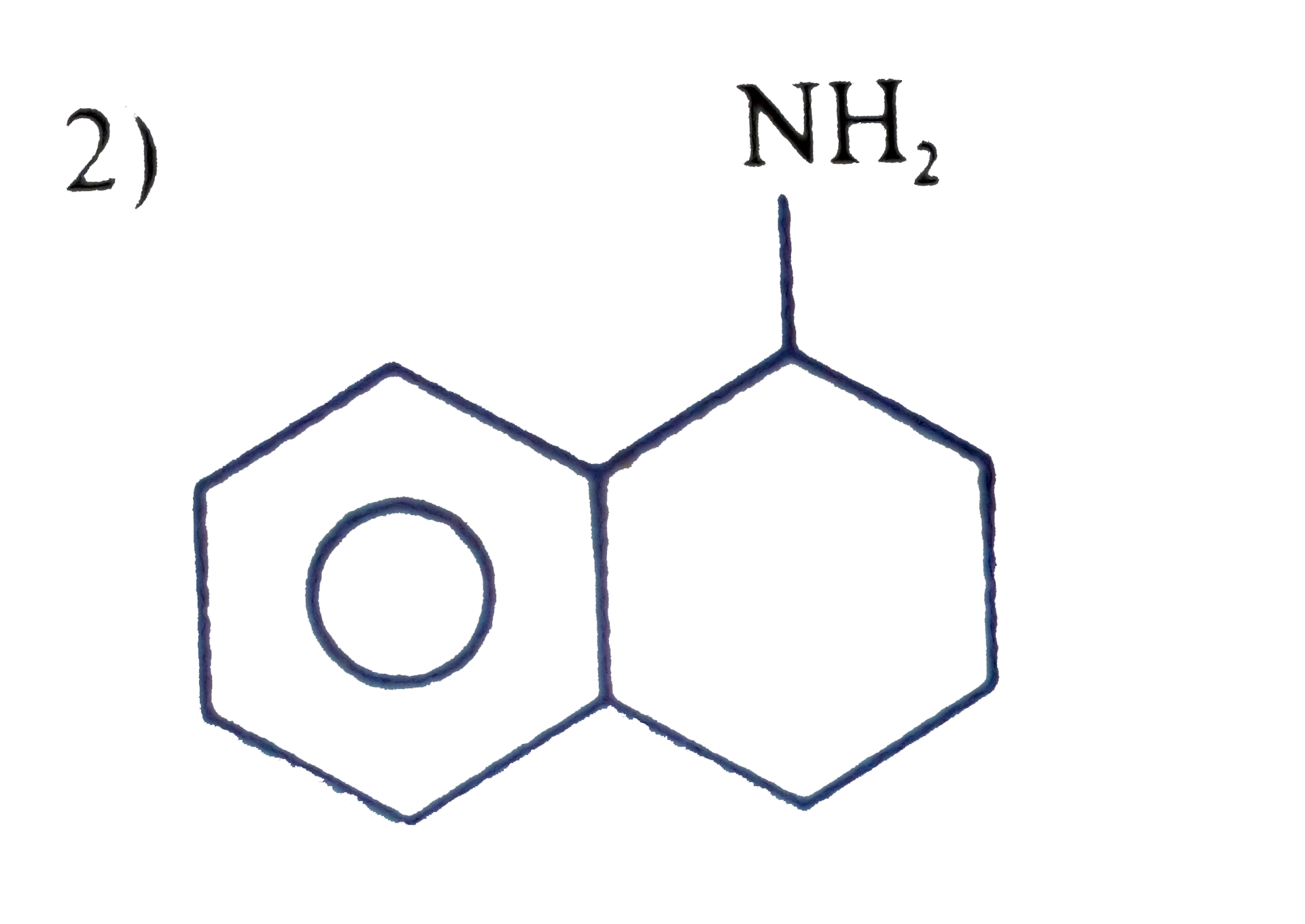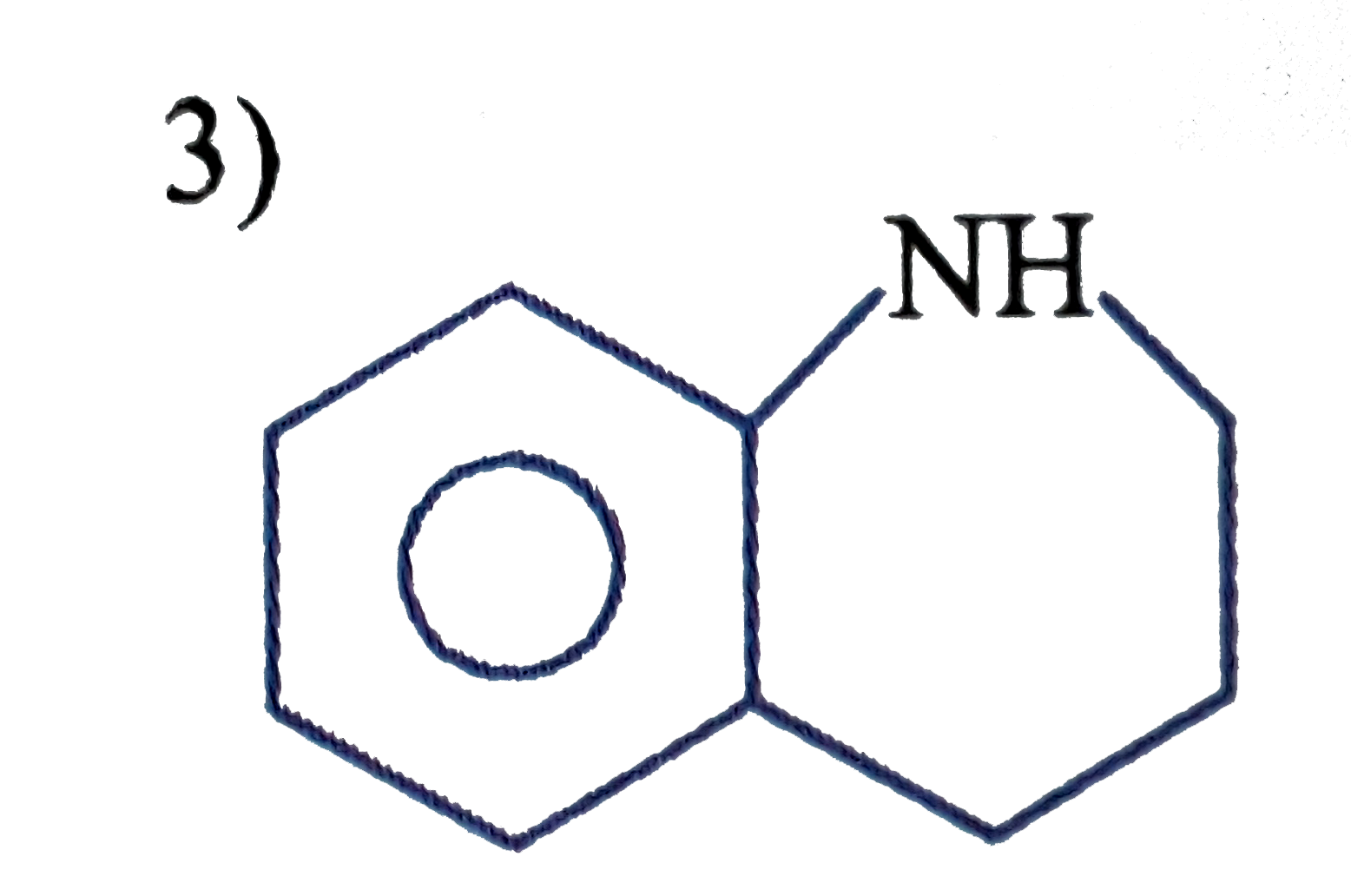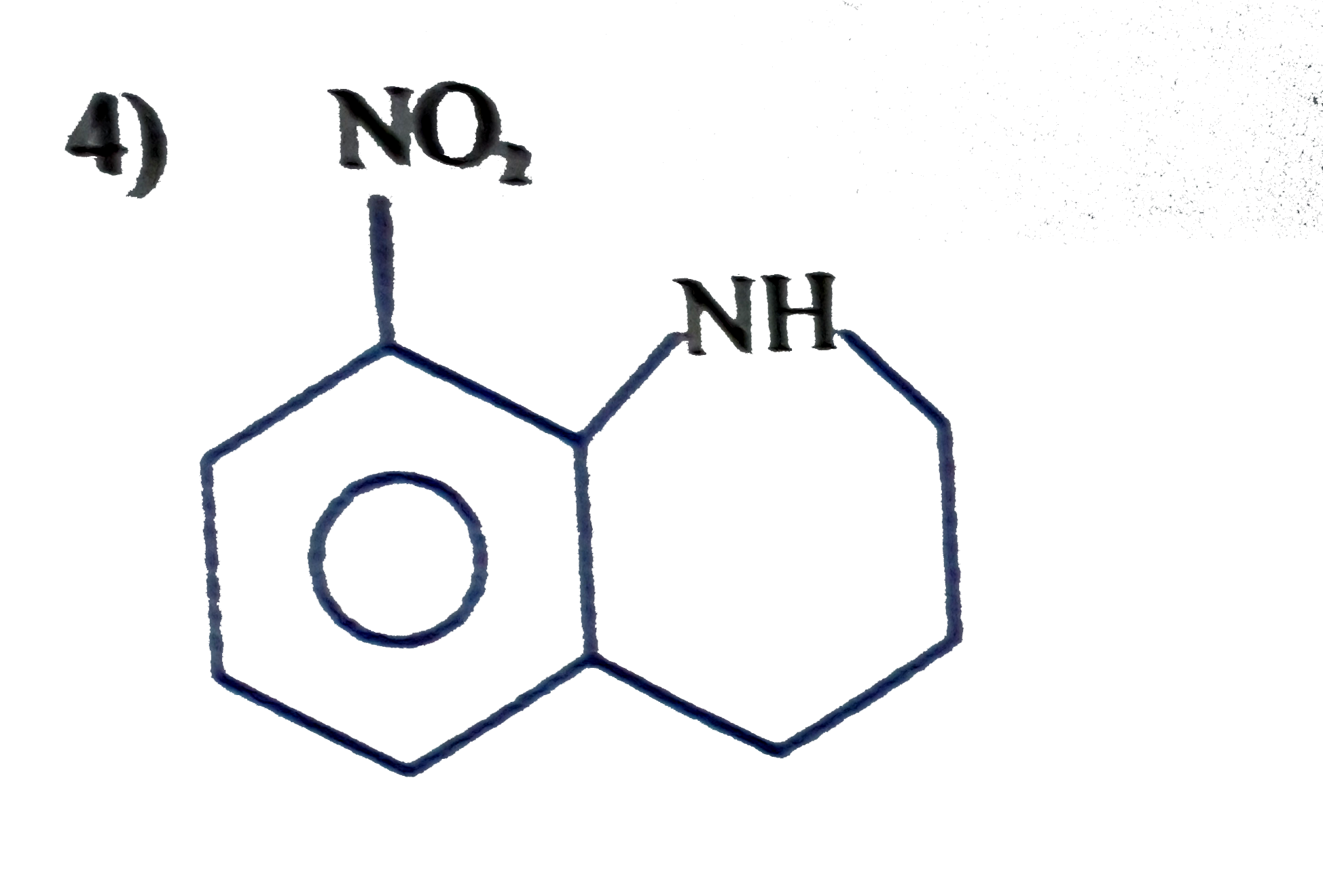Read the given passage and answer questions number 1 to 5 that follow :
Consider the reaction of an alkanamine and ammonia with a proton to compare their basicity. Due to the electron releasing nature of alkyl group, it (R) pushes electrons towards nitrogen and thus makes the unshared electron pair more available for sharing with the proton of the acid. Moreover, the substituted ammonium ion formed formed from the amine gets stabilised due to dispersal of the positive charge by the +I effect of the alkyl group. Hence, alkylamines are stronger bases than ammonia. Thus, the basic nature of aliphatic amines should increase with increase in the number of alkyl groups. This trend is followed in the gaseous phase. The order of basicity of amines in the gaseous phase follows the expected order : tertiary amine > secondary amine > primary amine > NH3. Th trend is not regular in the aqueous state as evident by their pKb values. In the aqueous phase, the substituted ammonium cations get stabilised not only by electron releasing effect of the alkyl group (+I) but also by solvation with water molecules. The greater the size of the ion, lesser will be the solvation and the less stabilised is the ion.
Arrange the following compounds in increasing order basicity in the gaseous phase :
(C2H5)3N,(C2H5)2NH,C2H5NH2
C2H5NH2<(C2H5)2NH<(C2H5)3N
Topper's Solved these Questions
- BOOK - U-LIKE SERIESCHAPTER - AMINESEXERCISE - MULTIPLE CHOICE QUESTIONS20videos
AMINES
- BOOK - U-LIKE SERIESCHAPTER - AMINESEXERCISE - ASSERTION-REASON QUESTIONS10videos
AMINES
- BOOK - U-LIKE SERIESCHAPTER - AMINESEXERCISE - NCERT TEXTBOOK EXERCISES57videos
AMINES
- BOOK - U-LIKE SERIESCHAPTER - ALDEHYDES, KETONES AND CARBOXYLIC ACIDSEXERCISE - SELF ASSESSMENT TEST (SECTION B)1videos
ALDEHYDES, KETONES AND CARBOXYLIC ACIDS
- BOOK - U-LIKE SERIESCHAPTER - BIOMOLECULESEXERCISE - LONG ANSWER QUESTIONS - I22videos
BIOMOLECULES
Similar Questions
Read the given passage and answer questions number 1 to 5 that follow :
Consider the reaction of an alkanamine and ammonia with a proton to compare their basicity. Due to the electron releasing nature of alkyl group, it (R) pushes electrons towards nitrogen and thus makes the unshared electron pair more available for sharing with the proton of the acid. Moreover, the substituted ammonium ion formed formed from the amine gets stabilised due to dispersal of the positive charge by the +I effect of the alkyl group. Hence, alkylamines are stronger bases than ammonia. Thus, the basic nature of aliphatic amines should increase with increase in the number of alkyl groups. This trend is followed in the gaseous phase. The order of basicity of amines in the gaseous phase follows the expected order : tertiary amine > secondary amine > primary amine > NH3. Th trend is not regular in the aqueous state as evident by their pKb values. In the aqueous phase, the substituted ammonium cations get stabilised not only by electron releasing effect of the alkyl group (+I) but also by solvation with water molecules. The greater the size of the ion, lesser will be the solvation and the less stabilised is the ion.
What is the role of alkyl group towards the basicity of an amine ?View SolutionRead the given passage and answer questions number 1 to 5 that follow :
Consider the reaction of an alkanamine and ammonia with a proton to compare their basicity. Due to the electron releasing nature of alkyl group, it (R) pushes electrons towards nitrogen and thus makes the unshared electron pair more available for sharing with the proton of the acid. Moreover, the substituted ammonium ion formed formed from the amine gets stabilised due to dispersal of the positive charge by the +I effect of the alkyl group. Hence, alkylamines are stronger bases than ammonia. Thus, the basic nature of aliphatic amines should increase with increase in the number of alkyl groups. This trend is followed in the gaseous phase. The order of basicity of amines in the gaseous phase follows the expected order : tertiary amine > secondary amine > primary amine > NH3. Th trend is not regular in the aqueous state as evident by their pKb values. In the aqueous phase, the substituted ammonium cations get stabilised not only by electron releasing effect of the alkyl group (+I) but also by solvation with water molecules. The greater the size of the ion, lesser will be the solvation and the less stabilised is the ion.
How is the basicity of an amine effected with increase in the number of alkyl groups ?View Solution
Knowledge Check
- Question 1 - Select One
Electron releasing group pushes electrons to ward nitrogen and hence increases the availability of lone pair of electrons and thus increases its basicity on the other hand, electron with drawing group decreases the availability hence makes the amine less basic
Among the following which is more basicA B
B C
C D
D
- Question 2 - Select One
Electron releasing group pushes electrons to ward nitrogen and hence increases the availability of lone pair of electrons and thus increases its basicity on the other hand, electron with drawing group decreases the availability hence makes the amine less basic
Which of the following is the strongest base?A B
B C
C D
D
- Question 3 - Select One
Electron releasing group pushes electrons to ward nitrogen and hence increases the availability of lone pair of electrons and thus increases its basicity on the other hand, electron with drawing group decreases the availability hence makes the amine less basic
Which of the following has maximum pKb value?A1)CH3CH2NH2B C3)(CH3CH2)2NHD
C3)(CH3CH2)2NHD
Read the given passage and answer questions number 1 to 5 that follow :
Consider the reaction of an alkanamine and ammonia with a proton to compare their basicity. Due to the electron releasing nature of alkyl group, it (R) pushes electrons towards nitrogen and thus makes the unshared electron pair more available for sharing with the proton of the acid. Moreover, the substituted ammonium ion formed formed from the amine gets stabilised due to dispersal of the positive charge by the +I effect of the alkyl group. Hence, alkylamines are stronger bases than ammonia. Thus, the basic nature of aliphatic amines should increase with increase in the number of alkyl groups. This trend is followed in the gaseous phase. The order of basicity of amines in the gaseous phase follows the expected order : tertiary amine > secondary amine > primary amine > NH3. Th trend is not regular in the aqueous state as evident by their pKb values. In the aqueous phase, the substituted ammonium cations get stabilised not only by electron releasing effect of the alkyl group (+I) but also by solvation with water molecules. The greater the size of the ion, lesser will be the solvation and the less stabilised is the ion.
What is the basicity order of the following compounds in aqueous solution ?
C2H5NH2,(C2H5)2NH,(C2H5)3NView SolutionRead the given passage and answer questions number 1 to 5 that follow :
Consider the reaction of an alkanamine and ammonia with a proton to compare their basicity. Due to the electron releasing nature of alkyl group, it (R) pushes electrons towards nitrogen and thus makes the unshared electron pair more available for sharing with the proton of the acid. Moreover, the substituted ammonium ion formed formed from the amine gets stabilised due to dispersal of the positive charge by the +I effect of the alkyl group. Hence, alkylamines are stronger bases than ammonia. Thus, the basic nature of aliphatic amines should increase with increase in the number of alkyl groups. This trend is followed in the gaseous phase. The order of basicity of amines in the gaseous phase follows the expected order : tertiary amine > secondary amine > primary amine > NH3. Th trend is not regular in the aqueous state as evident by their pKb values. In the aqueous phase, the substituted ammonium cations get stabilised not only by electron releasing effect of the alkyl group (+I) but also by solvation with water molecules. The greater the size of the ion, lesser will be the solvation and the less stabilised is the ion.
Why does the sequence of basicity of an amine change when we move from the gaseous phase to the aqueous solution phase ?View SolutionFind the number of electrons , protons In
Fluoride ionView SolutionCompara the mass of proton , neutron and electron?
View SolutionFind the number of electrons , protons In
Sulphate ionView Solution

